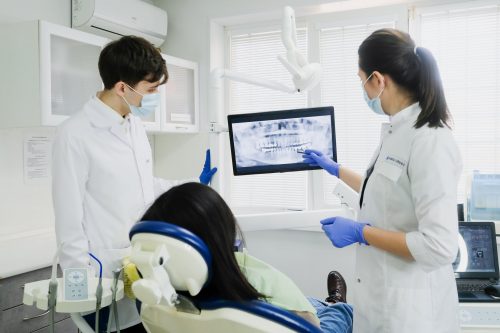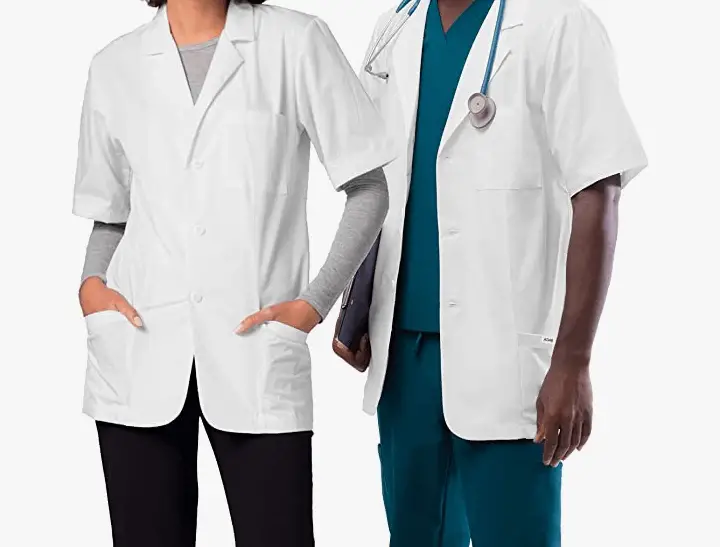During my junior postings in medical school, I was opportune to meet some medical students from countries like China who joined us during clinical rotations in medical school. I came to realize that they were international students doing their medical exchange program.
In my later years of clinical posting, I realized that something like that also existed in my school where medical students can apply to other schools for any clinical posting of their choice.
I wanted to do my own medical exchange program in radiology, but due to the pandemic, could not complete all the processes required for the exchange program. However, I already knew how the whole system works and that is why I came up with this guide for any medical student preparing for an international medical exchange program.
Table of Contents
- What is a medical exchange program?
- 6 Important Things To Know While Preparing For Your Medical Exchange Program
- 1. How Long Does An Exchange Program Take?
- 2. How Do I Get Into the Student Exchange Program?
- Step 1: Do your research
- Step 2: Choose your ideal host country
- Step 3: Choose your desired exchange program
- Step 4: Confirm if you are eligible
- Step 5: Register and apply for your desired program
- Step 6: Score well in your language proficiency test(s)
- Step 7: Apply for your passport or visa
- Step 8: Submit your supporting documents
- Step 9: Attend orientations
- 3. How Do I Apply for a student exchange program?
- 4. Are Student Exchange Programs Free?
- 5. Free Exchange Programs for Medical Students
- Conclusion
What is a medical exchange program?

For the uninitiated, a medical exchange program is a part-time educational program offering clerkships to medical students either abroad or in another medical school within the country. Medical students are encouraged to find opportunities for programs like this in order to boost their experience, personal development, and career.
A medical exchange program simply means that a “partner” institution called the host accepts a medical student, but does not necessarily mean that the student has to find a counterpart from the other institution with whom to exchange.
The exchange student goes on to complete some weeks of clinical posting in their preferred medical and surgical specialties in the host school.
Preparing for a medical exchange program is quite tasking, but there are some crucial things you need to know that can help make your application process seamless.
6 Important Things To Know While Preparing For Your Medical Exchange Program
Whether you are looking for an international medical exchange program or an exchange program in a medical school within your country of origin, you will find the information below very helpful.
1. How Long Does An Exchange Program Take?
Medical exchange programs typically last between 2 months to 12 months depending on the specialty you choose to do your rotation in and the education program in your medical school.
But remember that you have to take your own school exam timetable and curriculum into consideration so that you will be able to streamline it with your exchange program.
2. How Do I Get Into the Student Exchange Program?
The first step to getting into the medical student exchange program is to be sure that you would be going for the program long before you even start your clinical rotations in medical school. For most medical schools, this is usually during your preclinical years.
It requires proper planning both academically and financially because it would be requiring some extra spending on your side.
Below are the necessary steps in getting into the Student Exchange Program:
- Do your research
- Choose your ideal host country
- Choose your desired exchange program
- Confirm if you are eligible
- Register and apply for your desired program
- Score well in your language proficiency test(s)
- Apply for your passport or visa
- Submit your supporting documents
- Attend orientations
Step 1: Do your research
This is practically the first you want to take while preparing for your medical school exchange program. First, you need to decide if you would be traveling to another country, or remain in your country of residence for the program. What is the language of instruction in the country you intend to travel to? How long do you plan to stay? Which course or medical specialty would you like to be in during the program? Do you want to earn transferable credit within the course of your program?
You must come up with the answers to the questions as they suit your career path before you start making serious moves on your medical exchange program.
Step 2: Choose your ideal host country
The next step is to research your host country. What kind of economy do they have in relation to that of your country of residence? This will help your plan your finances and arrive at a practical budget sufficient enough for your travel. What is their language? (You need to know if you have to learn a foreign language before you travel). But generally, it is advisable if you go for your international medical exchange program in a country where you have a good command of the language. If your ideal host country is your current country of residence then you will have fewer issues in this step.
Step 3: Choose your desired exchange program
The next step is to research the medical schools in your desired host country that offer medical exchange programs for international medical students. Or if you are doing a local exchange program, find good medical schools that accept exchange students. Ideally, you should be looking out mainly for universities that are affiliated with your current school and also medical schools that are pretty good at the medical specialty you have chosen to do your program in. These should be schools with good infrastructures and lab equipment and that has full accreditation in the department you are applying to.
Step 4: Confirm if you are eligible
Before you commence with your application process, you must ensure that you meet all the eligibility criteria for exchange students in the host school. You should not have pending courses that you are yet to clear or have any bad records in your school. Your duty at this stage is to visit the website of your desired host school and find their admission requirements and criteria for accepting international students, then use it as a checklist while assessing your eligibility.
Step 5: Register and apply for your desired program
After you have done your research and confirmed your eligibility for the medical school exchange program, the next step is to commence your registration process. The next major subheading in this post covers what you need to do to successfully apply for a medical school exchange program.
Step 6: Score well in your language proficiency test(s)
You will not be needing an English Language proficiency certification if you choose a medical school in your current country for your medical exchange program. However, you may need to write a language proficiency test that is recognized in your host country. For most English-speaking countries, this could be the IELTS or TOEFL. We have a special guide on this blog that will help you score a minimum band score of 7.5 in your IELTS exam.
Step 7: Apply for your passport or visa
Once you have passed your language proficiency exam, the next step is to get apply for your visa and international passport and get them ready for your travel.
Step 8: Submit your supporting documents
This will include your transcripts, curriculum vitae, passport photographs, or your medical school admission headshots among others. The idea is to find out which documents you are required to submit from your host school and send them to them.
Step 9: Attend orientations
Many schools do offer orientation programs for medical students who are interested in going for medical exchange programs. Such programs are good places to find mentors and guides who will support you in the course of your application. Always remember that the best person to guide you in this is someone who has actually been on an exchange program at your school.
3. How Do I Apply for a student exchange program?

To apply for a medical student exchange program, your first line of action is to visit the website of your host school of choice and find out what their application process looks like. There is no clear-cut application procedure that covers all medical exchange programs, so you need to find out how theirs work. But there are certain things you need to do while applying to most schools.
The application process for medical student exchange programs:
- First, contact the appropriate program coordinator(s) in your school to discuss your interest in the desired program.
- Visit the website of the host school and find exchange programs for medical students in your country
- Start your application process
- Write your application letter and get it reviewed by your program coordinator
- Your application letter should have your school letterhead and faculty signature by your Dean of Academics
- Note the deadline for application and adhere to it
- Complete your application process and submit all supporting documents
4. Are Student Exchange Programs Free?
While some student exchange programs are completely free of charge for exchange students, you may be required to find a means to sponsor your visa, passport, feeding, and/or accommodation. However, some medical exchange programs do require that you pay some fee to be accepted.
If you are looking out for free medical exchange programs, always search first for host schools that are affiliated with your university. They are the ones that will mostly have free programs that you will be eligible for.
5. Free Exchange Programs for Medical Students
The best place to find free exchange programs for medical students is to visit your university website and search for available exchange programs. It is very likely that the ones listed here are for programs with schools that your school has an affiliation.
List of free international medical exchange programs for students open to all nationalities:

- Faculty of Medicine, the University of Bergen Exchange Program
- The Medical University of Vienna Exchange Program
- Guy’s, King’s and St. Thomas School of Medicine, London
- Charite Medical School Berline, Germany
- Royal College of Surgeons, Ireland
- Ruth & Bruce Rappaport Faculty of Medicine, Israel
- Nagoya University Japan
- Saitama Medical School Japan
- The National University of Singapore – Yong Loo Lin School of Medicine
Please subscribe to our newsletter and notifications for more updates on free exchange programs for medical students.
Conclusion
Getting into a medical exchange program is actually not as easy as it seems. You will make some expenses, and spend a lot of time on your application documents and language proficiency tests as well as orientations. But it is actually worth it when you consider the fact that it will boost your curriculum vitae while seeking residency programs abroad.
If you found this guide on exchange programs for medical students helpful, why not share and recommend it to your friends in medical school? I wish you the best in your medical school journey.




